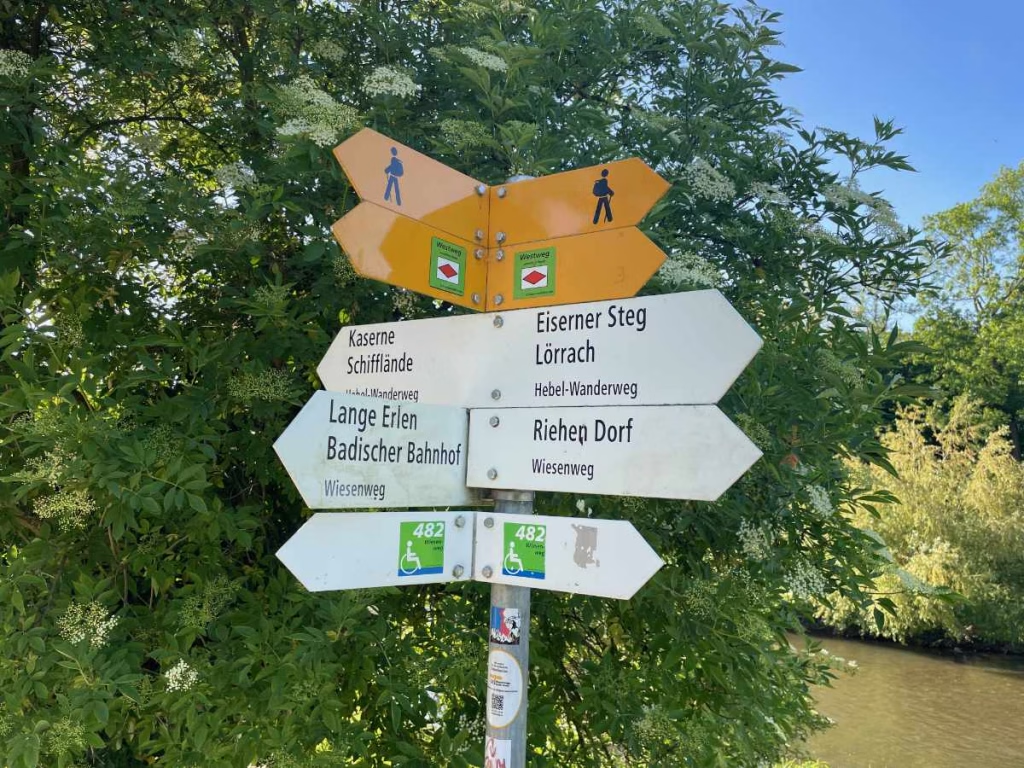
Mobility also entails making a city accessible on foot. What makes Basel walkable is the meticulous effort that goes into making the most reliable mode of transportation available – our own feet.
Often, when I have spoken to locals, a thing that stands out and warms my heart is how walkable Basel is. It is made possible by door-to-door connections with buses and trams. Is it by design or by chance?
To find out about this, we get into a Q&A with Andrea Büchel-Dürrenberger. She is the Project Manager at the Office of Mobility (Department of Construction and Transport Basel-Stadt), Office of Footpaths and Hiking Trails. Tread further to know what goes behind making Basel accessible on foot.
mozaik: So what does the Office of Mobility do?
Andrea Büchel-Dürrenberge: The Office of Mobility ensures excellent accessibility of the canton on roads and rails. We plan traffic in such a way that people and goods get from A to B safely and efficiently. At the same time, the burden of traffic on the environment climate should progressively reduce. Our transport planning aims to ensure that people and companies can easily meet their mobility needs while at the same time reducing traffic.
Could you give an overview of the planning process behind Basel’s pedestrian-friendliness?
Pedestrian traffic is one of the four central types of transport that are taken into account in every planning. We have to consider not just pedestrian traffic but also bicycle traffic, public transport (bus, tram, train) and motorized individual transport.
For pedestrian traffic, the partial basic plan for footpaths and hiking trails is the central, mandatory planning basis for the authorities, which defines the network plan and sets out strategies and principles that specify these strategies and principles.
The pedestrian friendliness is already very high in the canton of Basel-Stadt. In order to further increase this, improvements to pedestrian traffic are constantly being made during upcoming construction work. Even when creating new areas, attention is always paid to good permeability and attractive footpaths. The promotion and improvement of pedestrian traffic goes hand in hand with a good public transport offer and a good bicycle infrastructure.
How does your department contribute to Basel’s 2037 plan to make the city climate neutral?
By 2050, we want to switch completely to low-emission, climate- and resource-saving means of transport and modes of transport. Private motor vehicle traffic must not increase even with continued growth in the population and economy. The greenhouse gas emissions must fall to net zero by 2037.
In order to achieve this, mobility can and must make a significant contribution. The promotion of active mobility, in particular, contributes greatly to the achievement of these objectives. That is why we are constantly improving the infrastructure for pedestrian and bicycle traffic. This creates an important incentive so that more people are environmentally friendly on the road. With regard to the canton’s climate goals, the promotion of environmentally friendly mobility, that is, pedestrian/bicycle transport and public transport, is of particular importance.
Are there areas that are currently designated as vehicle-free zones? Are there any plans to make more neighborhoods accessible only to pedestrians?
The inner city area and especially the Grossbasel side is characterized by many pedestrian zones. In addition, there are numerous meeting zones in the Basel neighborhoods in which the pedestrians enjoy the right of way.
Could you give an insight into the hiking routes in Basel?
Hard to believe, but even our city canton has eventful hiking and walking routes. What is more fascinating is that routes start and end at public transport stops. Basel-Stadt has 37 yellow-signaled hiking routes, including four Switzerland mobile routes and ten signaled white special routes, so-called hiking-related offers. These include three wheelchair hiking trails, six walking paths, and one jogging trail. The hiking trails and hiking-related offers are maintained in cooperation with the association Wanderwege beider Basel. The four Switzerland mobile routes, which start or end in Basel, are so-called tourist routes (ViaRhenana, Dreiland-Wanderweg, ViaJura, ViaGottardo). In addition, together with the Verein Schweiz Mobil, they are regularly checked and assessed for their quality and improved where necessary.
Interview: Ajita Chowhan
